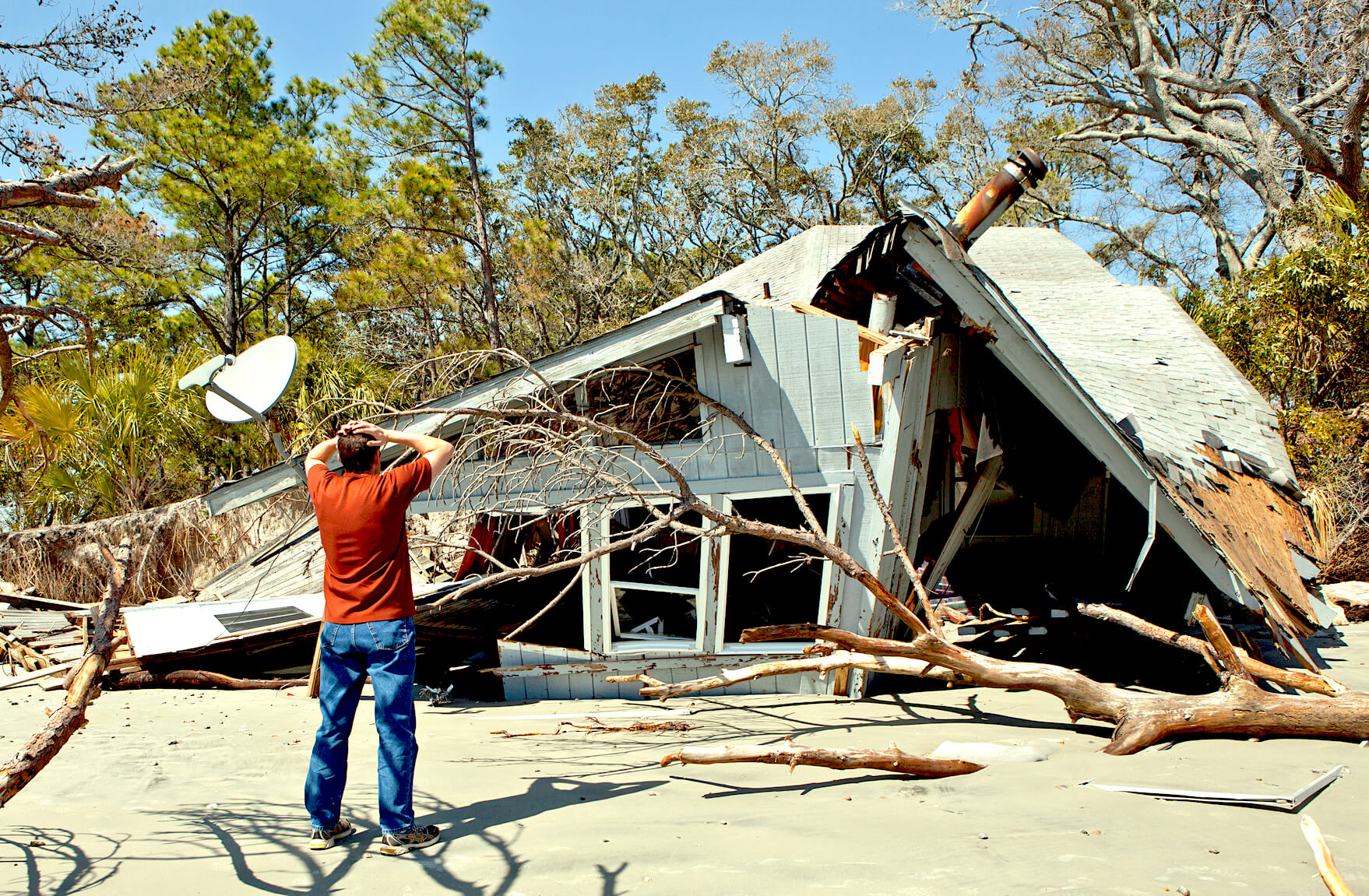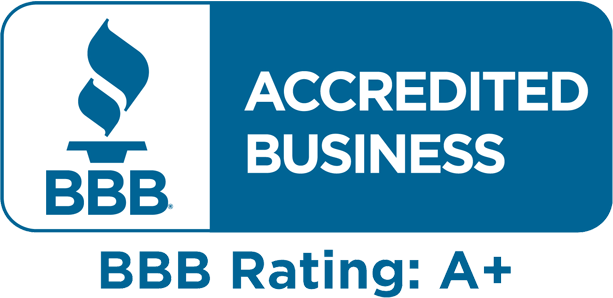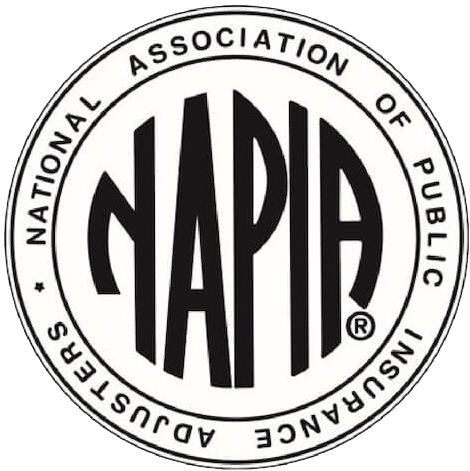How Hurricane Insurance Works: What’s Covered and Not Covered?
When hurricanes strike, you expect your home insurance company to help. Unfortunately, a standard homeowners insurance policy covers some damages – but not others. Many homeowners are unaware of these coverages and exclusions until after a major storm.
Today, we’re explaining how hurricane insurance works, including what is covered and what is not covered.

There’s No Such Thing as “Hurricane Insurance”
First and most importantly, homeowners insurance policies don’t include “hurricane insurance.”
Although hurricanes cause extensive damage, insurance coverage breaks down into more specific elements of a hurricane that cause the damage such as wind and rain.
Homeowners insurance can also protect you in the aftermath of a hurricane. If you leave your home and your home is robbed or vandalized, for example, then homeowners insurance can cover these damages.
What Does a Standard Homeowners Insurance Policy Cover?
A standard homeowners insurance policy covers many damages linked to hurricanes and hurricane damage, including:
- Windstorm damage
- Hail damage
- Theft and vandalism
- Explosions and falling objects (like trees)
- Fire and smoke damage
As long as your home was damaged by one of the perils listed above, you should be able to make a claim, and your insurance company should be required to compensate you.
How Hurricane Coverage Works
If your home is damaged by a hurricane, then you should be able to claim most damage under a standard home insurance policy.
Here’s how hurricane coverage works for a typical claim:
- Home insurance covers the cost of repairing your home to pre-loss condition.
- If your home is destroyed, then home insurance covers the cost of replacing your home. In many cases, the home insurance company simply sends you a check for the full value of your policy, which means it’s a total loss insurance claim.
- A standard home insurance policy covers all possessions inside your home – including furniture, TVs, mattresses, and anything else inside your home. This is called personal property coverage. High-value items may require additional coverage. If you didn’t buy additional coverage before the hurricane – say, for a $10,000 engagement ring you recently purchased – then your insurance policy may not cover these high-value items. It is very important that you inventory your home before a hurricane with video or photos. Once the storm has passed, take new photos of all items in their damaged location. Show an overall view and a close up of the damage. Do not throw any items away until you have an actual approval, in writing, no matter what the adjuster may tell you. Contents are often fully declined or debated with you if you don’t have documentation to prove your claim.
- Home insurance policies also cover additional living expenses, which are extra costs you are forced to pay if your home is unlivable in the days following a hurricane. Additional living expenses (ALE) can include hotel bills, restaurants, toiletry expenses, rental car costs, and similar expenses you are forced to pay as a result of the hurricane. Keep track of all receipts after the hurricane to ensure you receive fair compensation.
Hurricane Deductibles Are Different than Standard Homeowners Insurance Deductibles
Many homeowners are surprised to learn about hurricane deductibles.
A standard homeowners insurance policy has a deductible of $1,000 to $2,500 or a percentage of your coverage amount. This is usually 1% for all perils other than a hurricane. This is the amount you pay for each claim before your insurance company covers the remaining amount.
However, as soon as a storm becomes a hurricane, insurance companies start charging a hurricane deductible. This deductible tends to be much higher than an ordinary deductible.
A typical hurricane deductible is 1% to 5% of the value of your home. However, if you live in a particularly hurricane-prone area, or if you live on the water, then your hurricane deductible could be 10% of the value of your home.
If you have a $400,000 home and a 5% hurricane deductible, then you need to pay a $20,000 deductible before insurance covers all remaining damage from the hurricane.
Types of Hurricane Damage Not Covered by Home Insurance
You might assume home insurance covers all damage related to a hurricane. Unfortunately, that’s not always the case. After many hurricanes, homeowners are forced to pay tens of thousands of dollars – or more – out of pocket because they didn’t understand their coverage.
Some of the items not covered by a standard home insurance policy include:
- Flood Damage: No standard home insurance policy covers flood damage. If a hurricane causes water levels to rise in your area, leading to flood damage, then you may not be able to make an insurance claim for this damage. Home insurance covers windstorm and rainstorm damage if a storm opens a hole in your roof, but it does not cover flood damage unless you’ve specifically purchased extra flood damage insurance coverage through the National Flood Insurance Program (NFIP).
- Wind-Driven Rain: A standard home insurance policy doesn’t even cover all windstorm and rainstorm damage. Many policies exclude something called “wind-driven rain” damage. This damage tends to be common after a hurricane. If wind forced water into your home through gaps, and those gaps weren’t caused by the hurricane, then insurance may deny or reduce your claim. Instead, the insurance company may blame you for having holes in your roof or for not properly maintaining your property – even if the holes were not apparent until the hurricane.
- Sewer Backup Damage: Many homeowners insurance policies also do not cover sewer backups and damage related to sewer backups. These issues can be common after a hurricane, as normal wastewater systems struggle to drain as they normally would. If sewage backs up into your home, then your insurer could deny or reduce your claim if you don’t have additional coverage for sewage or wastewater backup. If you do have this coverage, it would be filed under your normal policy, not under the “windstorm or hurricane” coverage. Be sure to check for Sewer Back Up after a storm as this type of water has many pathogens and contaminants in it that could require additional precautions and cleaning methods.
- Damage That Occurs Soon After You Purchase a Policy: It may seem smart to upgrade home insurance or add flood insurance when a hurricane is approaching the coast. Unfortunately, homeowners insurance companies don’t allow you to add coverage at the last minute. A standard flood insurance policy, for example, takes 30 days to take effect. Many insurers prevent you from adjusting your policy when a hurricane is anywhere close to the coastline. Some insurers refer to “the box,” for example, which is a 16,000 square mile area surrounding the southeastern United States. If a hurricane enters the box, you can’t adjust coverage or buy a new policy.
- Windstorm Exclusions: As hurricanes become more common and more expensive, many insurers have added windstorm exclusions to their policies. Windstorm exclusions are common in Florida, Texas, the Gulf Coast and throughout the southeastern United States, where windstorms and hurricanes often cause costly damage. If your insurance policy has a windstorm exclusion, then you could receive limited compensation after a hurricane, and you may want to adjust coverage or switch insurers. You may need to pay extra for windstorm coverage or add a windstorm endorsement, for example. There is an area along both coast lines, for about 30 miles inland, that requires a specific type of windstorm coverage that is usually offered by a state pool of insurance companies.
Final Word on Hurricane Damage Insurance Coverage
A standard home insurance policy covers hurricane damage, including rain damage, windstorm damage, fallen tree damage, and similar damage after a storm, unless you are in a special windstorm designation.
Unfortunately, home insurance policies may not cover flood damage, sewer backup damage, or wind-driven rain – all of which could cause extensive damage after a hurricane. Some insurers even add windstorm exclusions to limit your compensation entirely.
Review your policy before storm season to ensure you have adequate coverage for hurricanes. Or, schedule a free consultation with a ClaimsMate public adjuster to receive the compensation you’re owed for your insurance claim.






